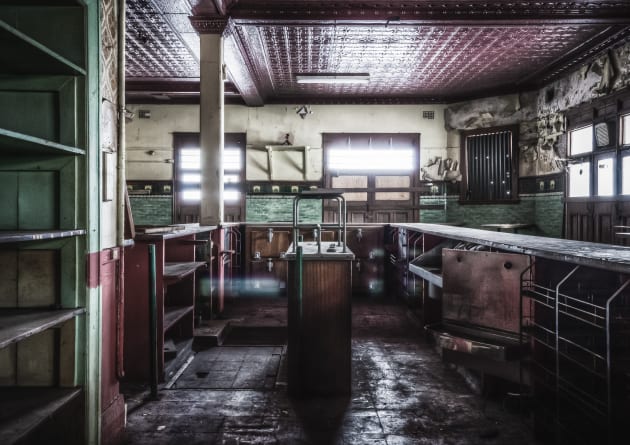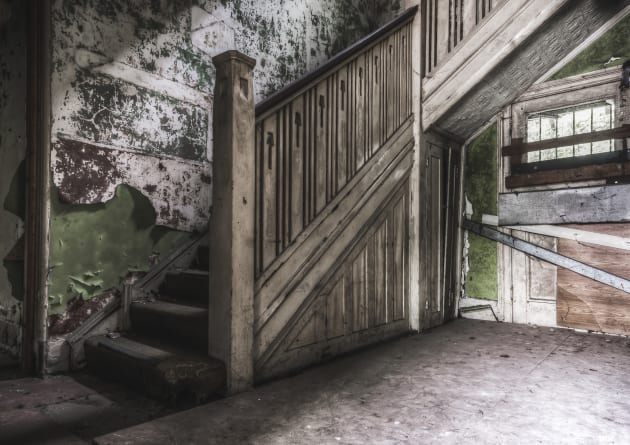The Terminus Hotel in Pyrmont, Sydney was originally known as the Coopers Arms Inn. The building was partially constructed around 1865. Last drinks was over 30 years ago when the establishment was boarded up and closed in 1984. In April, the 101-year-old heritage-listed building sold for $5 million to a private investor who intends to restore the property.
Photographer Brett Patman brings us a very special and rare glimpse into a place where time stood still.

In 1911, the main bar was built when ownership was transferred to Tooth & Co. It was at this time the establishment was renamed as Terminus Hotel, borrowing its name from the tram which used to run the length of Harris Street, terminating on John Street right outside the hotel. Various alterations were carried out at the Terminus Hotel during the 1960s and 1970s which would have resulted in the final appearance you still see today.
The Terminus Hotel was a typical blue-collar establishment. Workers from the local quarries, wharves, sugar mill, and the Pyrmont power station made up the majority of patronage to the hotel for lunch breaks or a cheeky beer or scotch on the way home from work.

The main bar was restricted to men only, with ladies permitted in the female parlour. Things certainly have changed dramatically since the early 1900s. The main bar was often filled with cigarette smoke which would stain the pressed metal roof, requiring frequent repainting.
Sold privately in 1984, the hotel has not traded for the last 32 years, only seeing slivers of light through the boarded-up and corrugated iron-covered windows.

The heritage listed building in its current form is pretty unmistakable. It’s hard not to be captivated its leafy green exterior when passing, with the entire north face of the upper facade completely covered by ivy. It actually looks so incredible that you could be forgiven for believing that the feature is intentional.
Hand-painted advertisements remain on the lower facade, and the beer garden has been transformed into something that more closely resembles a rainforest. The interior of the time capsule is equally as impressive as its exterior. Downstairs is the original bar, which has been gathering dust over the last three decades. The building features pressed metal ceilings throughout the hotel. The peeling paint walls meet with original glazed tiles, rarely seen in any other establishments in modern day Australia.

Moving up the original hardwood staircase leads to the upstairs guest rooms, each featuring their own disparate combinations of carpet, wallpaper, furniture, and fixtures. Over the years, vandals and squatters have removed items from the property, and left their mark in the form of graffiti.
About Brett Patman
Brett Patman has been photographing abandoned buildings and disused industry since 2011. Towards the end of 2015, he created Lost Collective as a means of documenting the places he visits. Lost Collective has received local and international recognition, and Patman was named runner-up in the 2016 National Trust Heritage Awards.
Lost Collective is a unique project that can engage and reconnect communities while preserving heritage and history through art and public engagement. It has become one of Australia’s most well-known online catalogues of rarely seen built environments.
Website - http://lostcollective.com
Instagram - http://www.instagram.com/lostc0llective











